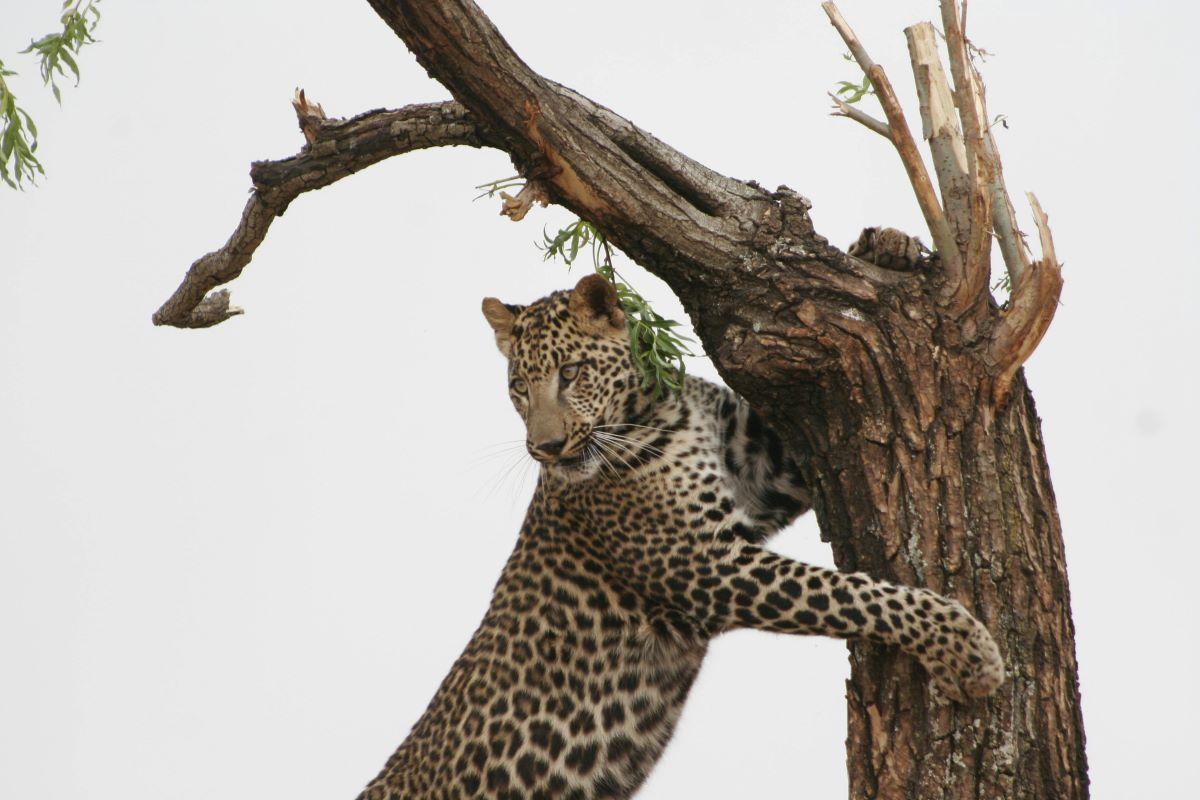Of the many African big game hunting destinations in Africa, you might not have South Africa as your first thought, which would be a huge mistake. South Africa provides you with an array of both safari hunting destinations, as well as species.
Whether you’re looking for Big 5 or other types of African big game, you’re sure to find what you’re looking for when hunting in South Africa.
[DYNAMIC-BLOGTABLEOFCONTENT]
Big Game Hunting in South Africa
South Africa is home to many opportunities for big game hunting, offering both the traditional and some extra species that are sure to grab your attention. Discussed further will be the trophy targets on offer, where to find them, and how to go about your safari hunting methods.
Big Game Hunting Species
Big 5: The Traditional Hunting Safari Targets
The Big 5 are synonymous with hunting on the African continent, and hunting in South Africa offers these opportunities at a reduced cost when compared to other African big game hunting destinations.
The Lion
The lion (Panthera leo) is probably the most recognizable of all African big game. Males are known for their signature manes that can vary from shades of buff to black. Both males and females are available for hunting in South Africa during its year-round hunting season.
June – August are recommended for lion hunting safari and the average lion hunt lasts 10 days. Lion trophies require both CITES and TOPS permits and as of now the US, Australia, and certain EU countries do not allow the import of lion trophies.
Lion hunting in South Africa is possible in Mpumalanga, Northern Cape, and Limpopo. Common hunting practices include the bait and blind as well as spot and stalk.
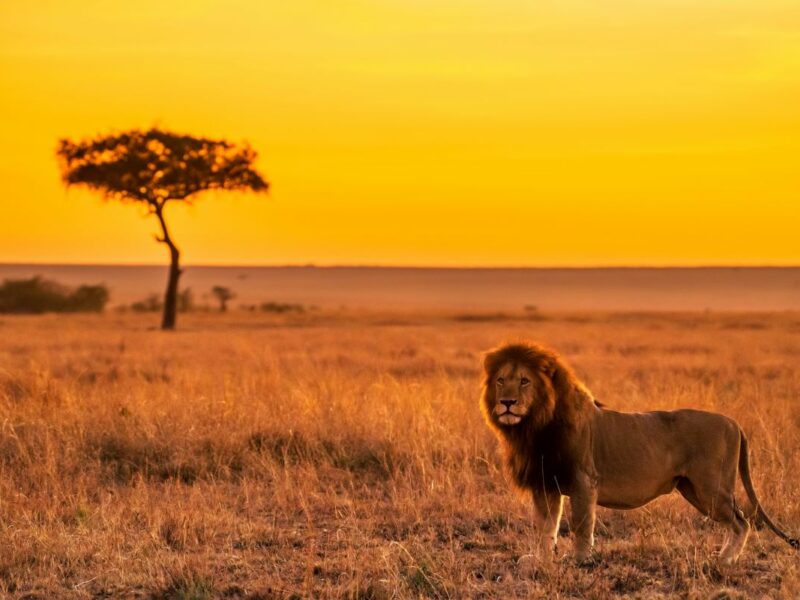
The Leopard
Found in Limpopo, Mpumalanga, and the Northern Cape, the leopard (Panthera pardus) is one of the most striking of all big cats and is known for its impressive tree climbing, sprinting, and swimming abilities. Featuring a light to dark gold pelt patterned with dark rosettes, short limbs, and a muscular body, the leopard is a favorite big game hunting trophy in South Africa. Much like its fellow big cat, the lion, hunting a leopard also requires both TOPS and CITES permits.
Leopards are shy and solitary animals and tend to be highly territorial. They are known to rest during the day and be active from dusk till dawn. These prize big game hunting targets prey on smaller antelope like duiker, bushbuck, and impala. They are also known to prey on carnivores like the black-backed jackal and even cheetah.
The general method used for leopard hunting in South Africa is the bait and blind. This allows the hunter to line up a good shot with a relatively low likelihood of the target speeding off.
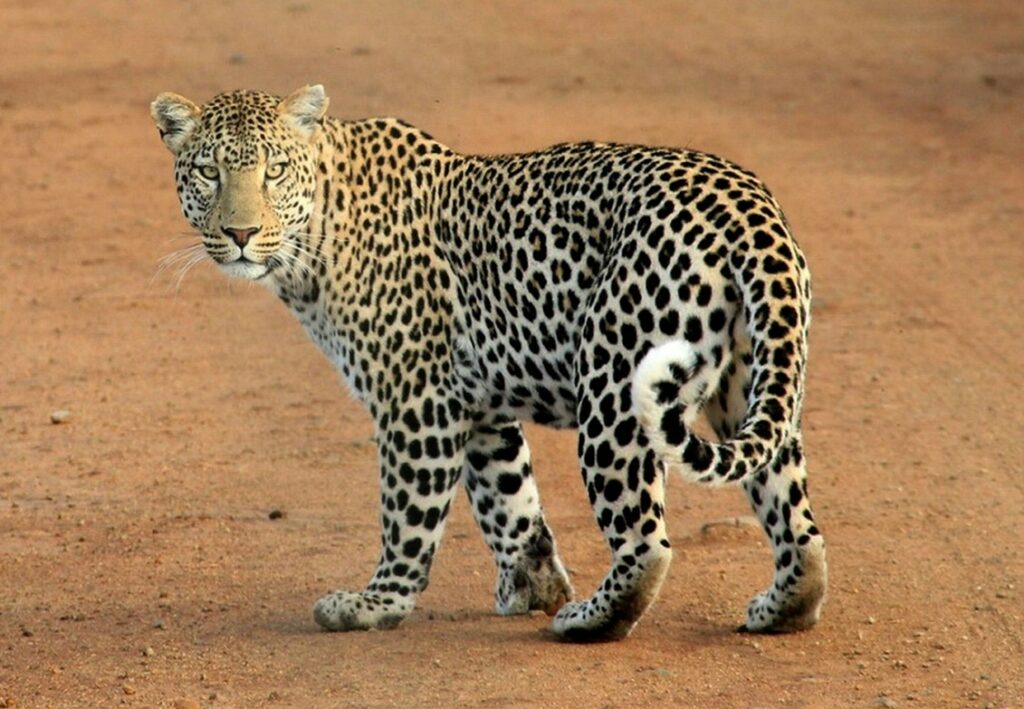
The Cape Buffalo
The “Black Death” of Africa will certainly bring its signature toughness and bad attitude to the party when you’re hunting in South Africa. Known for their “boss” or horn base, the Cape buffalo can be found across South Africa in the Western Cape, Northern Cape, and North West provinces. These hunting safari bad boys are known for putting up a fight when wounded and accurate shot placement is paramount. When this African big game is wounded, it will charge in the direction of the noise or movement (i.e. you) especially if you start pursuing it. Think about it, around 200 people (mainly hunters) are killed annually by buffalo.
Buffalo needs to drink water daily and spotting at a waterhole is a good bet. Buffalo tracks can be followed by vehicle until the herd or group is spotted, from here you must proceed on foot.
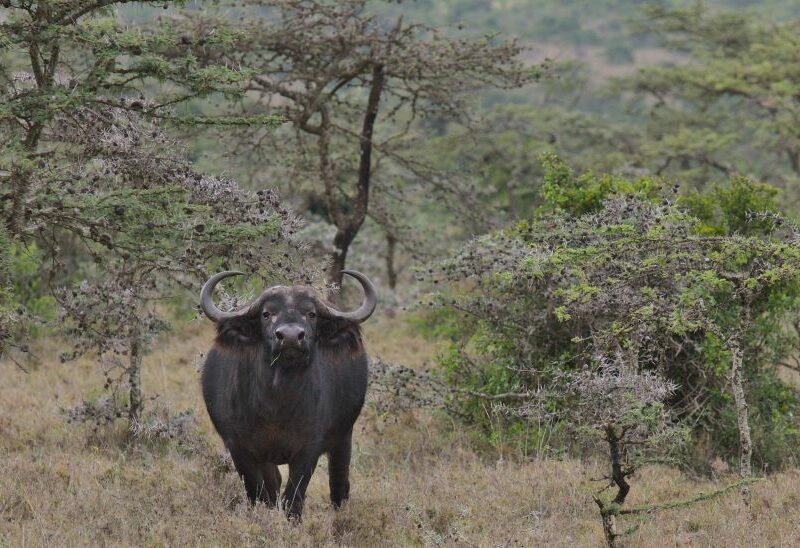
The Elephant
Hunting of the world’s largest land mammal is subject to availability, but they can be hunted in areas in the KwaZulu–Natal, Mpumalanga, and Limpopo provinces. This trophy hunting species in South Africa is highly sought after and some hunting safari trips are booked years in advance due to their limited availability. Elephants feed in sessions; in the morning, afternoon, and nighttime, and during these browsing sessions they can consume well over 650 pounds of food. They are also social animals that communicate with each other through touching the trunk or shoving with feet, as well as through vocal cues like rumbling, trumpeting, or barking.
Elephant (Loxodonta Africana) hunting requires a lot of walking and stalking, oftentimes through dense bush areas. Shot placement is crucial, and the head and heart shots need complete accuracy.
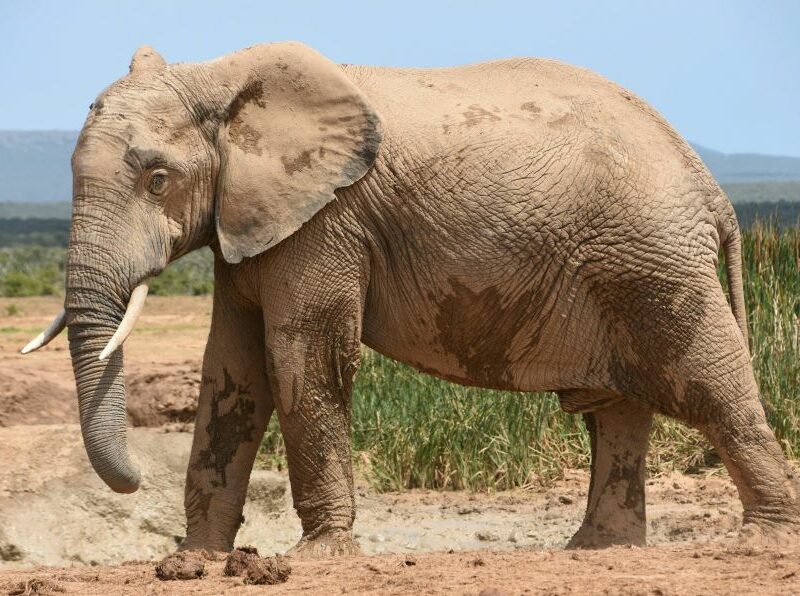
The Rhinoceros
There are only 2 places in the world where legal rhinoceros hunting is allowed to take place and South Africa is one of them. Both the white rhino (Ceratotherium simum) and black rhino (Diceros bicornis) are available for hunting, but black rhino hunting has much more stringent regulations.
Rhinos can easily weigh over a ton in adulthood and these African big game boast skin that can be over an inch in thickness. When telling the difference between these landmarks of big game hunting look at the lip shape. White rhinos are grazers, and their flat mouths act as a “lawnmower” to aid their diet of grasses. Black rhinos have a pointed or hook-shaped lip that helps with browsing for leaves, branches, and bark; black rhinos also possess a deeper back arch than their counterparts.
Both of these iconic big game hunting targets require a TOPS and CITES permit when hunting in South Africa. They can be found on private hunting reserves in the Northern Cape, North West, and Limpopo provinces.

Other African Big Game Species for Hunting in South Africa
Alternative big game hunting targets in South Africa include members of the plains game category. These antelope, though not as renowned, still provide exciting and enjoyable safari when hunting in South Africa.
Wildebeest
Both the black and blue wildebeest are available for hunting in South Africa. These African big game are often nicknamed the “poor man’s buffalo” and just like the buffalo, they are notoriously tough animals. The black wildebeest (C. gnou) is the larger of the two and their horns appear buffalo–like in appearance, while the blue wildebeest (C. taurinus) have a lighter tail and more forward curving horns.
Blue wildebeest are responsible for the epic migrations seen in many a documentary. A side function of these migrations is that the risk of predation is reduced; wildebeest will often share plains with zebra and giraffes in large numbers. Many believe that the linkage between this big game hunting target and other species helps to ensure that more young will survive by relying on the idea of safety in numbers.
Wildebeest hunts can be found in the Limpopo, Northern Cape, Eastern Cape, Mpumalanga, and Gauteng provinces.
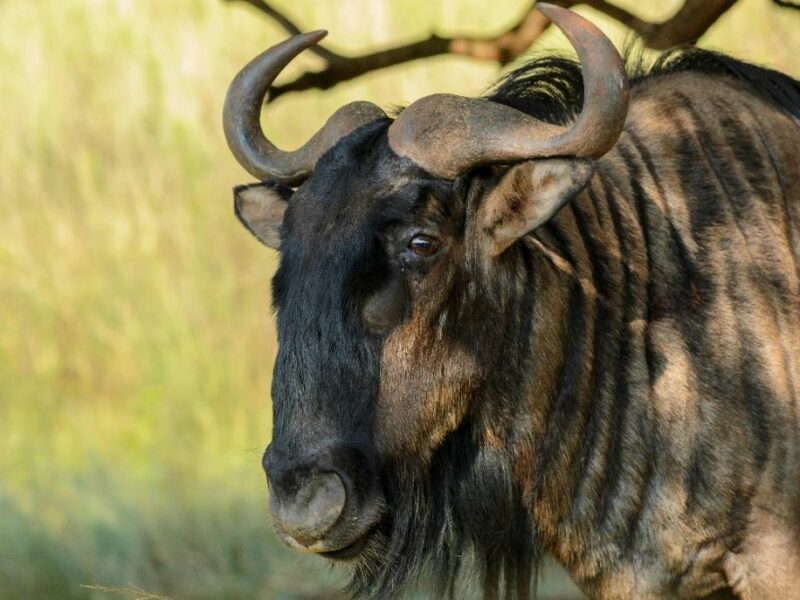
The Kudu
Of the two kudu species, only the Greater kudu (Tragelaphus strepsiceros) is found in South Africa. Only the males of this big game hunting antelope grow impressive spiral-shaped horns, and they have a grey-brown coat when compared to the red-brown color of the females. Found in the Mpumalanga, Eastern Cape, Gauteng, and KwaZulu–Natal provinces, finding this antelope when hunting in South Africa shouldn’t be too difficult.
Hunting methods for kudu include stalking and ambushing, these African big game are known for great eyesight and traveling at speed so utmost care is needed to prevent spooking them.
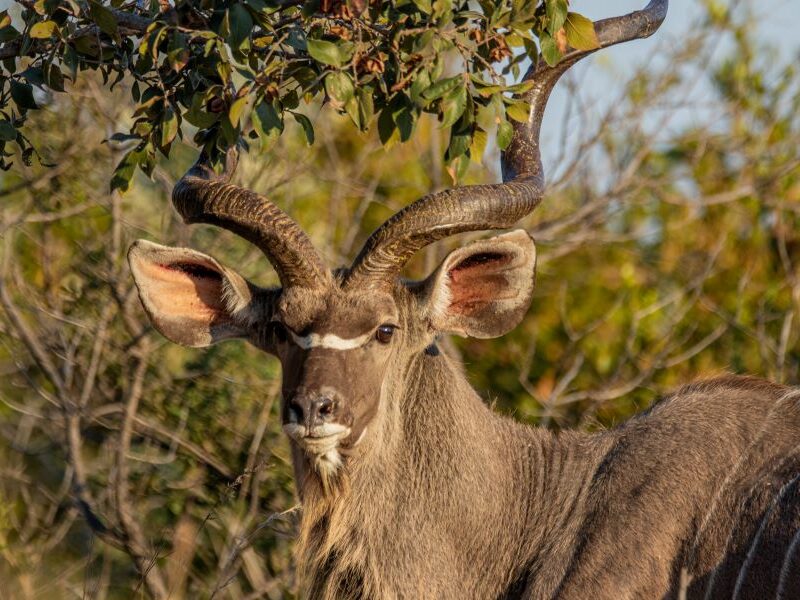
The Eland
The common eland is the second largest of all antelope species and can be found in the provinces of KwaZulu–Natal, Free State, Mpumalanga, and Gauteng. Both sexes grow spiral-ridged horns, and with age, their coat turns a grey-brown shade. Eland, like other antelope, has good eyesight and can sprint quite quickly, but cannot maintain this speed for long distances. Apart from sprinting, the eland is known for its jumping skills. Despite its size, these African big game antelope can easily clear fences or obstacles over 6 feet in height.
Eland mating has no specific season and largely depends on the rainy season as this is when they gather. Males and females form their herds, while “nursery groups” contain mothers and juveniles. At around 2 years old the juveniles will join either a male or female herd depending on sex, and the mother will then rejoin her herd.
When hunting in South Africa, common methods include the spot and stalk as well as the use of blinds
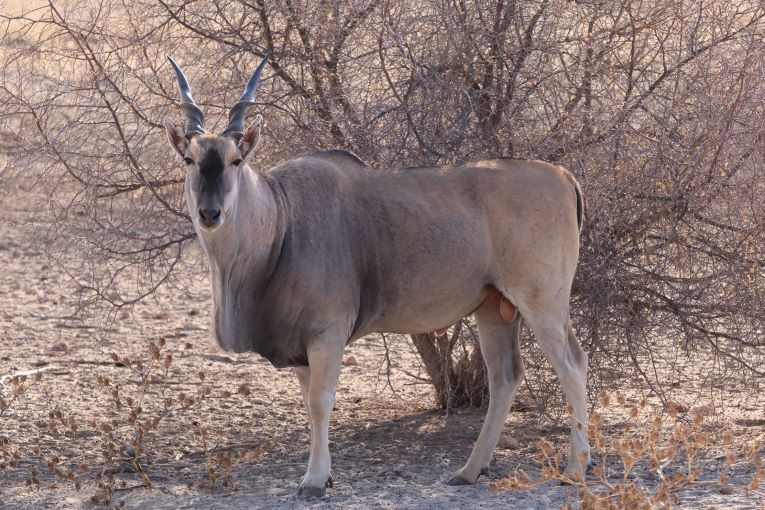
The Oryx
The two species of Oryx available for hunting in South Africa are the South African Oryx or Gemsbuck (Oryx gazella) and the Scimitar-horned Oryx (Oryx dammah). Both big game hunting species have rather striking coloring and markings; differentiating them comes down to the Scimitar not having dark hind leg markings and its horns curving backward.
The Oryx species prefers arid, desert-like conditions and can run in herds numbering in the hundreds. Both males and females grow the trademark horns, and these big game hunting antelope know how to use them too! There have been reports of Oryx’s using their horns to kill lions. The Oryx is an animal of great significance in Africa and abroad; it is the national animal of our neighboring country Namibia, the West Asian state of Qatar, and it is also the logo of Qatar Airways.
As with most African big-game antelope species, the best methods involve spotting and stalking. Scimitar Oryx can be found in the Northern Cape, while Gemsbuck (South African Oryx) can be found in the Western Cape, Free State, North West, and Northern Cape provinces.
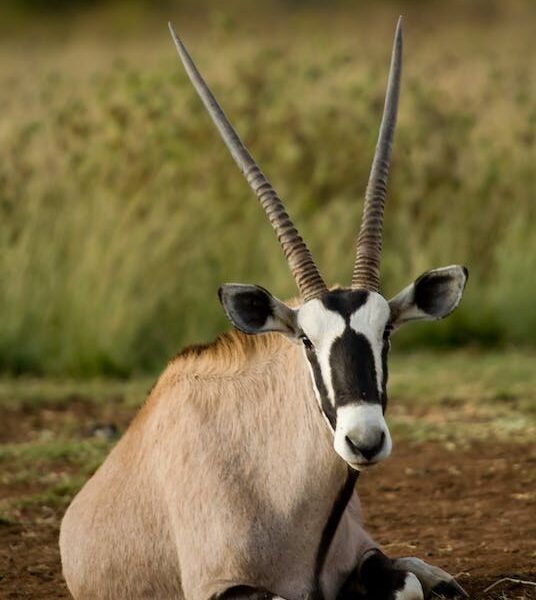
Big Game Hunting Methods
Methods used when hunting in South Africa may need to be altered depending on factors like the weather, rains, or the behavior of the target species. Be prepared for these changes by ensuring that you have the right safari hunting equipment, you can double-check with your outfitter as to which methods will be effective during your hunting safari period.
Spot and Stalk
- This method involves spotting animals either from a vehicle or elevation and then stalking them. In the case of spotting from a vehicle, you’ll continue until you reach the tracks or spot the animal ahead. You must then leave the vehicle and proceed on foot. Hunting from a vehicle is not allowed while hunting in South Africa.
Walk and Stalk
- This involves the good old-fashioned game hunting footstalk. Here you can cover miles in a day so be sure to wear good, comfortable boots.
Glassing
- This method involves an elevated point and binoculars. Once you’ve spotted your potential targets you’ll most likely start your tracking with a vehicle before moving to a footstalk like the above.
Things to Remember When You’re Planning on Hunting in South Africa
Hunting Season
South Africa’s hunting season runs throughout the year, and the winter months of June–August are recommended, as this is when African big game are likely to be out foraging or on the prowl for food.
Weapons and Ammunition
- African big game, whether dangerous game or plains game, requires a minimum round of .357
- When hunting elephants, your ammunition is required to be a full metal jacket or monolithic solid.
- Most big game hunting is done via rifle, although handguns can be used when special permission is granted.
The Paperwork and Permissions
- All licenses and permits must be prearranged.
- It is advised to keep a copy of your firearms import permit in your rifle or gun case. You can be checked at any time for paperwork.
- You’re advised to double-check the availability of quotas either via online resources or with the outfitter.
- TOPS and CITES permits will require some of your personal information and need to be arranged accordingly.
Why is African Big Game Hunting Important?
South Africa has many world-leading conservancy, rescue, and breeding programs and facilities; and these projects are all extremely expensive to operate and sustain.
This is where hunting in South Africa comes in.
Proceeds of legal hunting are contributed to these programs as a means of supporting them and ensuring their success in the future.
Big game hunting also supports employment and job creation, from guides and trackers to ranch staff and reserve employees. Whether they’re directly involved in the safari hunting, or the background supporting you through admin, accommodation services, catering, transport, etc.
Hunting in South Africa plays a much bigger role than you think.
Author: A. Baker
